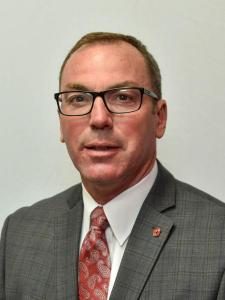Agronomy, Conservation, Homepage Slider, Water Quality
Ohio Agriculture Conservation Initiative Assessment Survey Report reveals conservation progress
By Matt Reese, Ohio’s Country Journal
The Ohio Agriculture Conservation Initiative (OACI) hosted a panel discussion on the findings of its 2021 Assessment Survey Report on practices being used by farmers in the Lower Maumee watershed to manage water and nutrients. The assessment results show ample conservation efforts, as well as areas for improvement and continued farmer education and resourcing by OACI.
“Our assessment survey shows us that farmers in the Lower Maumee Watershed are taking conservation practices and their stewardship of the land seriously,” said Kris Swartz, farmer and Chair, Ohio Agriculture Conservation Initiative. “We also recognize room for improvement and OACI will continue to provide resources and educate farmers in our ongoing effort to increase adoption of productive conservation practices. We encourage Ohio’s farmers to get involved in the OACI’s Farmer Certification Program, H2Ohio and other conservation focused programs to learn about new practices and share information.”
The survey results establish a baseline of adoption for various farming practices in the Lower Maumee watershed. The information will allow for a more targeted approach to help increase some practices, while also displaying that some practices are already adopted at an adequate level.

“The assessment survey allows us to understand which conservation practices are being adopted and some background on the decisions being made by farmers,” said John Fulton, Professor and Extension Specialist, College of Food, Agricultural, and Environmental Sciences at The Ohio State University.
The survey assessed cost share program enrollment, acres farmed and ownership status, tillage, nutrient applications and other nutrient management strategies, and water management practices.
“What stood out to me was long-term control of the farm fields. It was surprising and encouraging because sometimes it’s talked about as a hurdle for conservation with farmers,” said Jordan Hoewischer, Director of Water Quality and Research, Ohio Farm Bureau Federation. “Ninety-five percent of the farms in the survey were farmed by the same person for over three years. That goes to show you that if we get them the right information and get them in the right program, they have ties to their farm field and are likely to be more open to making conservation investments.”
Key findings from the assessment survey include:
- Approximately 66% of the fields surveyed were currently enrolled in a cost share conservation program, including both state and federal level programs.
- Most farmers were testing their soil adequately, with 83% of the fields surveyed being sampled every 3 years. The vast majority of soil samples (87%) were being done using precision agriculture, via grid or zone methods.
- 40% of fields surveyed had phosphorus applied using variable-rate technology (VRT); 13% of fields had nitrogen applied using VRT.
- Nearly 50% of the fields were either no tilled or minimally tilled.
- 48% of the farmland assessed was owned by the farmer and 52% was in a lease.
- Farmers know their land, as 95% of the fields had been managed by the farmer for 3 years or longer with only 5% being farmed less than 3 years.
- 42% of fields surveyed had water management practices installed and 9% used multiple water management practices.
This inaugural assessment survey is the first in what will be an ongoing program by OACI, conducting a survey assessment of two watersheds per year and re-surveying each previously surveyed watershed every three years.
The assessment survey was conducted by OACI through a randomized sampling of 450 crop production fields within the HUC8 Lower Maumee watershed. A statistical approach was implemented to determine what practices are being used by farmers within this watershed to manage water and nutrients. In the field survey process, all the cropped fields within the watershed were considered in the randomized selection process regardless of farm and field size. This survey was completed prior to the implementation of H2Ohio practices. A trained Soil and Water Conservation District employee interviewed the landowner or farm manager for each field surveyed.